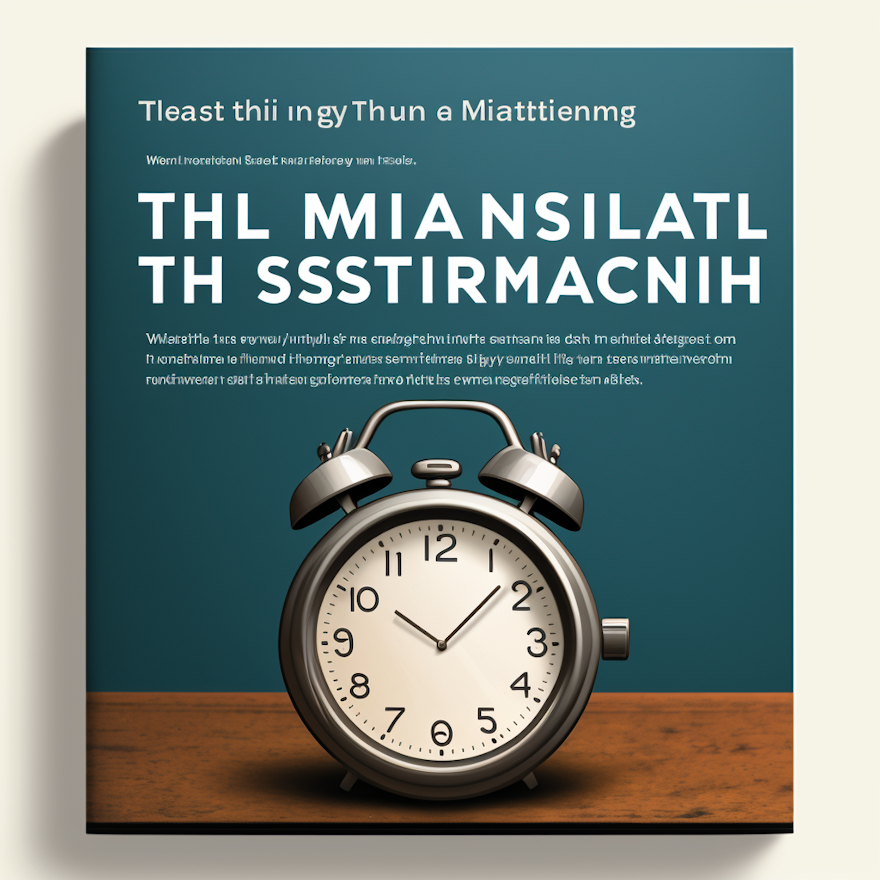Effective time management is crucial for success in any professional setting, especially when it comes to dealing with email communication.
With the constant influx of messages, it's easy to get overwhelmed and lose control of your inbox. In this article, we will discuss various techniques for streamlining your email workflow, helping you stay organized, save time, and maintain a healthy work-life balance.
Organizing Your Inbox: Folders, Labels, and Prioritization
The first step in streamlining your email workflow is to organize your inbox. An uncluttered, well-organized inbox makes it easier to locate and process important emails, reducing stress and saving time in the long run. Some useful methods for organizing your inbox include:
- Creating folders or labels to categorize emails based on their content or purpose. For example, you could have separate folders for client communication, project updates, and internal team discussions.
- Using priority flags or markers to highlight important messages that require immediate attention.
- Archiving or deleting emails once they have been addressed, to keep your inbox clutter-free and focused on current tasks.
The Art of Email Triage: Processing Emails Efficiently
Email triage is the process of quickly assessing, categorizing, and taking action on incoming emails. This technique can help you maintain control over your inbox by ensuring that you address the most important messages first. To implement email triage:
- Set specific times throughout the day to check and process emails, rather than constantly monitoring your inbox.
- Skim through new messages and prioritize them based on urgency and importance.
- Take immediate action on high-priority emails, such as responding, delegating, or scheduling time to address the issue.
- For less urgent messages, either address them during your designated email time or schedule them for later.
Effective Email Templates: Streamlining Responses and Repetitive Tasks
Using email templates for common responses and tasks can save you significant time and effort. By creating and customizing templates for frequently-sent messages, you can streamline your workflow without sacrificing personalization. To create effective email templates:
- Identify recurring themes or topics in your email communication, such as project updates, meeting requests, or client follow-ups.
- Draft template messages that cover the necessary information and can be easily adapted to suit specific situations.
- Personalize each template by addressing the recipient by name and making minor adjustments to the content to ensure it remains relevant to the context.
Scheduling and Time Blocking: Managing Email Time Effectively
Allocating specific time periods for email management can help you maximize productivity and minimize distractions. By scheduling and time blocking, you can maintain focus and momentum on important tasks without getting derailed by email notifications. To implement scheduling and time blocking:
- Determine the times of day when you are most productive and reserve those periods for high-priority tasks.
- Set aside designated email processing times during less productive periods, such as mid-morning or late afternoon.
- Turn off email notifications or close your inbox during non-email time blocks to prevent distractions.
The Power of Short, Concise Emails: Enhancing Clarity and Reducing Response Time
Clear and concise email communication can save time for both the sender and the recipient. By writing effective emails that convey the necessary information without overwhelming the reader, you can reduce misunderstandings and speed up response times. To write short, concise emails:
- Start with a clear and informative subject line.
- Use short paragraphs and bullet points to break up the text and improve readability.
- Focus on the essential information and avoid unnecessary details or jargon.
- Edit your message to remove redundancies and ensure clarity.
Mastering Email Automation: Tools and Tips for Saving Time
Incorporating email automation tools and techniques can significantly streamline your email workflow, saving time and effort on repetitive tasks. Some popular email automation features include:
- Filters and rules: Many email clients allow you to create custom filters or rules that automatically sort, label, or archive incoming messages based on specific criteria. This can help keep your inbox organized and prioritize important emails.
- Autoresponders: Setting up autoresponders can save you time by automatically sending pre-written responses to certain types of emails, such as inquiries or appointment requests.
- Vocal.email: This app enables you to send voice notes via email, which can be particularly useful for busy professionals who find speaking more efficient than typing or who wish to add a personal touch to their email communications. By using vocal.email, you can save time while still maintaining a strong connection with your clients, colleagues, or team members.
Knowing When to Step Away: Balancing Email Communication with Other Responsibilities
While managing email communication is an essential part of most professional roles, it's important to strike a balance between email management and other responsibilities. Spending too much time on email can hinder your ability to complete other tasks, leading to reduced productivity and increased stress. To maintain a healthy balance:
- Set boundaries: Establish specific email processing times and avoid checking your inbox outside of these periods, except in cases of emergency or high-priority messages.
- Prioritize tasks: Assess the importance and urgency of your various responsibilities, and allocate your time accordingly. Email should not always take precedence over other tasks.
- Take breaks: Regularly step away from your computer or electronic devices to give your eyes and mind a break. This can help reduce the risk of burnout and improve your overall productivity.
Conclusion
Streamlining your email workflow is essential for effective time management in today's fast-paced professional environment.
By implementing the techniques and strategies discussed in this article, such as organizing your inbox, mastering email triage, using templates, scheduling and time blocking, writing concise emails, incorporating automation tools, and balancing email communication with other responsibilities, you can significantly improve your productivity and work-life balance.
Give these techniques a try and experience the benefits of a well-managed inbox and a more efficient workday.
